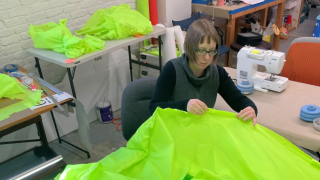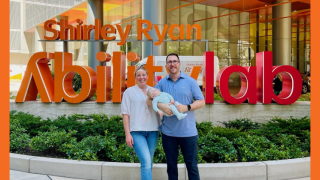Understanding Pain
Body
Pain is a normal human experience that may be related to a physical injury, disease process, or emotional trauma. Pain provides you with important information about your physical tolerances, overall health and well-being, healing process, and sense of safety in the world. Pain is an important protective mechanism, hardwired into your biology. Everyone’s experience of pain is unique, much like your thumbprint.

Understanding your pain – why you feel it and what you may do about it, is an important step towards pain treatment and developing healthy coping strategies. Research shows that understanding the purpose of your pain has a positive impact on your recovery. Pain left unmanaged can be an isolating and stressful experience. It is important to understand the purpose of your pain as it relates to your medical diagnosis and work with therapists who appreciate how pain may interrupt your roles, habits and routines.
Consulting with your rehabilitation team (physician, nurse, OT, PT, SLP, Psychologist) is an important first step. They will collaborate with you to determine a comprehensive and holistic approach to treating your pain.
We look forward to partnering with you at the
Shirley Ryan Abilitylab Pain Management Center

Resources To Consult:
BOOKS
Body
A World of Hurt: A Guide to Classifying Pain (2015) by, Melissa Kolski & Annie O’Connor
Explain Pain, 2nd Edition (2013) by, David Sheridan Butler & G. Lorimer Moseley
Painful Yarns: Metaphors and Stories to Help Understand the Biology of Pain (2007) by, G. Lorimer Moseley
Why Do I Hurt? : A Patient Book About the Neuroscience of Pain (2013) by, Adriaan Louw
WEBSITES
Body
Discover the contributing factors to why you may hurt & learn about coping strategies that may support your recovery:
Managing Your Pain
This resource from the Shirley Ryan AbilityLab offers valuable insights and strategies for individuals dealing with pain. It provides comprehensive information on pain management techniques, including physical therapy, medication, and holistic approaches, empowering users to take control of their well-being. Whether you're facing chronic pain or recovering from an injury, this resource is designed to support your journey toward relief and improved quality of life.
https://www.sralab.org/lifecenter/resources/Managing-Pain
American Chronic Pain Association
See their many pain management resources for identifying and caring for your pain plan with support, videos, and relaxation audio. There are also pain logs, and fibromyalgia logs in Spanish and English.
https://www.acpanow.com/
Choose PT This site gives all the benefits of culminating the best science based resources for pain, avoiding opiods, and why you should choose physical therapy as a main modality of pain relief solutions.
https://www.choosept.com/choose-physical-therapy-over-opioids-for-pain-management-choosept
NIH-DoD-VA Pain Management Collaboratory
Learn more about nonpharmacological therapies, talking points, opioid usage, good pain care plans, and the whole health model.
https://painmanagementcollaboratory.org/resources-for-people-with-pain/
Pain after Spinal Cord Injury - Model Systems Knowledge Translation Center
A short informative online video slide show to inform on pain with SCI.
https://msktc.org/sci/slideshows/pain-after-spinal-cord-injury
Tame The Beast This site brings together easy to understand information for patients from a collaboration between a pain scientist (LM), a pain physiotherapist (DM) and a professional communicator (SC).
https://www.tamethebeast.org/#tame-the-beast
VIDEOS
Body
Brainman: Understanding pain (5 min)
Tame the beast (Lorimer Mosley)
What? Pain is Complex - The Overflowing Cup Analogy of Pain by Greg Lehman
REFERENCES
Body
Butler, D. S., Moseley, G. L., & Sunyata. (2019). Explain pain.
Kolski, M. C., O'Connor, A., & Rehabilitation Institute of Chicago. (2015). A world of hurt: A guide to classifying pain.
Header photo by Josh Riemer on Unsplash



